10 Days Tsurphu to Yangpachen Hiking Tour (Price from $1,517)
Hidden Scenery in Tibet
The essence of this tour is the 4 days' trek from Tsurphu to Yangpachen. You will take the rugged path crossing beautiful mountains and valleys. The experience on the trek is great combination of alpine climbing, sweeping panoramic views of mountains and also visiting some featured monasteries. Besides the trek, you will also take several days visiting in Lhasa city not only exploring the famous attractions, but also preparing for the trek. Learn about Tibet culture and religion; Follow monk's life in monasteries; Trek around holy lake Namtso.
Highlights of this tour:
- Climb up the grandiose Potala Palace and visit sacred Buddhist temples and monasteries in Lhasa, such as Jokhang Temple, Drepung Monastery;
- Enjoy harsh but beautiful high plateau landscapes along the trekking from Tsurphu to Yangpachen;
- Go to explore the holy lake as well as one of the most beautiful lakes in China - Namtso Lake.
Tour Brief Information
-
Tour price: from
$1,517
1. This price is based on a group of 2 adult travelers who will take our private tour and share one standard rooms in regular local 4-star hotel in lower seasons.
2. This price is subject to change according to your traveling season, group size, hotel class, change of activities in your itinerary and possible fluctuation of currency exchange rate. If you want a lower price, you can get more people to join you, or use economy class hotels.
3. This price is only valid to March 31, 2025.
4. Reference exchange rate of USD 1= RMB 6.85. The final quotation will be adjusted according to the latest real-time exchange rate.
- Tour code: TD-HT-10
- Tour type: Escorted Private Tour
- Destination: Lhasa / Tsurphu / Yangpachen / Namtso / Lhasa
- Duration: 10 days and 9 nights
- Departure: You Choose!
- Travel Theme:


- Best Time:


- Physical Level

Physical Requirements
- Capable of walking short to medium distances by oneself in high altitudes. Must be capable of minor ascents and descents.
- Capable of light walking and hiking in high altitudes. Suitable for most fitness levels.
- Average fitness level. High altitude hiking for several hours.
- Possibly includes high altitude hiking of up to 6 hours per day or activities of a similar nature. Requires an elevated level of fitness.
- Features demanding high altitude treks or cycling. Only suitable for those with a high level of physical fitness and endurance.
Note: If you have any questions concerning the requirements or the unique demands for your particular tour package, please feel free to contact one of our helpful Travel Consultants for further information.
It's advisable to have a body check-up or have your doctor's advice before visiting Tibet. Visitors with a record of heart, lung, liver, or kidney problems must seek medical advice before making the decision to go to Tibet Also, people with any of the following problems should not go to Tibet.
- Have already caught a cold
- Have severe anemia
- Have high blood pressure or severe heart disease
- Have pneumonia, tuberculosis, tracheitis, or bronchitis
- Tour Pace
Tour Pace
- Leisure: enjoy your tour in a slow pace, allowing plenty of time for photography, you will see the most famous attractions, and spend plenty amount of time in each destination.
- Comfortable: enjoy your tour in a comfortable pace, you will see most popular attractions, and spend reasonable amount of time in each attraction.
- Tight: enjoy your tour at a tight pace, as you will be able to see as many tour attractions as possible in the available amount of time.
- Max Altitude
5,190m
Altitude
High Altitude Sickness is one of the biggest challenges when travelling in Tibet. According to our experience, most people will be fine up to 3500m above sea level, as the altitude go higher up to 4500m, mild symptoms as shortness of breath, headache might occur. Adverse reactions may vary from person to person. In most cases, the symptoms are mild and will subside in several hours to several days as the body acclimatizes.
Mild Symptoms of AMS include:
- Headache
- Shortness of breath with exertion
- Rapid pulse (heart rate)
- Nausea or vomiting
- Fatigue
- Loss of appetite
- Poor sleeping
- Dizziness or light-headedness

- Itinerary Details
- Price Guide & Booking
- Trip FAQs
- Reviews
- Make an Enquiry
Your tour - at a glance
Day 1~4 Arrival & Lhasa Tour
Day 5~8 Trekking from Tsurphu Monastery to Yangpachen
Day 9 Namtso Lake - Lhasa
Day 10 Lhasa Departure
Itinerary Details - Day by Day
Day 1 Lhasa Arrival
Welcome to the roof of the world! You will be picked up by local tour guide at the airport hall or train station, and then be escorted to your hotel in Lhasa city in a private vehicle.
If your flight arrive at Lhasa early, you can take a short visit to the Nyethang Buddha which is coveniently located along the road to Lhasa. Built in more than 700 years ago, the Nietang Buddha is the largest and highest stone Buddha in Tibet, and was colorfully painted by deep colors of golden, red, blue and black. West not far from the Buddha is the Nyethang Monastery where the famous ancient Indian Buddhist master Atisha meditated and taught Buddhism.
After arrival at your hotel, the rest of the day is free for you to explore the local areas and acclimatize yourself to the air, temperature and high altitude of Lhasa.
High Altitude Acclimation Tips: 1) go for some leisure walking to acclimate the high altitude but avoid strenuous activity after arrival; 2) you’d better not have bath, in case of catching a cold; 3) drink more water, and have some fruit; 4) have a good rest.
Day 2 Lhasa ( B )
Start today’s Lhasa exploration with an exciting visit to the landmark - Potala Palace which is regarded as one of the most beautiful architectural building in the world. You will climb up the palace along the zigzag stone paths with white-and-red walls to the top of the palace where you can not only appreciate the exotic Tibetan-style architecture, but also get a great view of Lhasa’s urban areas, then walk into the inner space of Potala Palace to explore the stately chapels and learn about the history of the palace.
Continuing your exploration, you will then get to Jokhang Temple which is considered as the spiritual heart of Tibetan Buddhism. Each day, there are thousands of pilgrims coming from different places in Tibet to the temple to worship to the Buddha. This temple is also known as the “house of Buddha” because it keeps the precious Jowo Rinpoche, the life-sized (5 foot/1.5m) image of the Shakyamuni at the age of 12. The last site for today’s exploration is the famous Barkhor Street. It is a circular and wide street encircling the Jokhang Temple. The local people like to walk on the street for several circles usually in the late afternoon as a daily tradition of pilgrimage. The street also has many shops selling a wide variety of traditional Tibetan goods, religious items and handcrafts.
Tips of Today: 1) there are 1,080 steps up to climb to the top of Potala Palace, so don’t walk in a rush, which may cause high altitude sickness; 2) taking photos is not allowed inside the palace; 3) today you will be mainly outside, please bring some water, a hat, sun cream, and sun glasses with you.
-
 Great view of Potala Palace in the evening
Great view of Potala Palace in the evening
Day 3 Lhasa ( B )
After breakfast, you will firstly go to visit the beautiful Norbulingka which used to be the former summer palace of Dalai Lamas in the ancient time, and now is a public park. It is famous for its Potrang, the private palaces of former Dalai lamas with grandiose Tibetan architecture style. Next, drive several kilometers to the western outskirts of Lhasa to visit Drepung Monastery. Drepung, in Tibetan, means “prosperity”. Since its establishment, Drepung Monastery has always been one of the most important Buddhist monasteries in Tibet. In its heyday, there were more than 10,000 monks lived and studied in the monastery. Throughout its history, many important and famous Tibetan leaders used to study here, especially the Dalai Lamas. So Drepung Monastery is also respectfully known as the “Mother School of Dalai Lamas”.
In the afternoon, you will be taken to another famous monastery in Lhasa - Sera Monastery. It is famous for the spectacular “Buddhism Debating”. As a daily routine, the monks gather in a courtyard, and debate on the Buddhist doctrines with supplemented gestures, which is thought to be helpful to facilitates better comprehension of the Buddhist philosophy to attain higher levels of study. After enjoying the "Buddhism Debating", you will be transferred back to the city. The rest time is your own free time to rest.
The Etiquette of Visiting Monastery: 1) you shouldn’t wear short and uncover shoulders; 2) taking off your sunglasses and hat before entering the chapels; 3) taking photos is usually not allowed inside the chapels.
-
 Monks Gathered at the Entrance of Drepung Monastery
Monks Gathered at the Entrance of Drepung Monastery
Day 4 Lhasa to Tsurphu Monastery ( B )
After breakfast, you will be transferred about 70km from Lhasa city to Tsurphu where you will explore a unique monastery and prepare for your trekking next day. This Tsurphu Monastery to Yampachen trekking covers 55 kilometers and will be done in 4 days.
Tsurphu Monastery (4500m) is the seat of Karma branch of Kagyu sect of Tibetan Buddhism. It was built by the founder of Karma Kagyu Sect in 1187 whose birthplace is Kham in Sichuan Province. Karmapa is the leader or abbot of Karma Kagyu. There have already had 17 Karmapas ruled in the Tsurphu Monastery since 12th century.
Day 5 Trek from Tsurphu to Leten ( B, L , D )
Trek: 3-4 hours, 11km
Today’s trek begins by heading west or up the valley. You’ll pass some nomad tents and valley junction. Leten is also called the “highest village in the world”, several families live here permanently, braving the severe climate with their livestock.
Day 6 Trek from Leten to Bartso ( B, L, D )
Trek: 5-6 hours, 15km
Today you’ll reach the highest pass of this trekking – Lasar La, so getting refresh is very important.
It will cost 3 hrs from Leten to Lasar-la. Then another 3 hours walk to Bartso. This nomad village of 5 homes with a permanent source of water is a good place to camp.
Day 7 Trek from Bartso to Dorjeling Nunnery ( B, L, D )
Trek: 5 hours, 18km
Look northwest from Bartso to the opposite side of the valley. Clearly visible, a wide trail winds up from the valley to the top of the ridge. Ford the valley stream and make for this trail, 25 minutes' walk over marshy ground from Bartso. It is another half-hour to the summit of the ridge. From the top you'll see a sallde north of an intervening valley. On the far side of this saddle is Dorjeling Nunnery.
Day 8 Trek from Norjeling Nunnery to Yangpachen ( B, L, D )
First, you will use 1 hour reach the large river of the Lhorong Ma Chu. Another 3 hrs walk to Yangpachen Monastery. It is a 15km road journey to Yangpachen. The hot-spring here,7km west of Yangpachen, is great to ease your aching limb.
Day 9 Namtso Lake, Lhasa ( B, L )
Today, you will be taken to have an exciting trip to the holy lake Namtso. After arrival at the lakeshore, take some rest and throw yourself into the incredible landscape of holy lake.
Namtso Lake is the highest saltwater lake in the world with an altitude of 4718 meters, also the second largest saltwater lake in China (after the Qinghai Lake). It’s quite common for tourists who are awestruck at the Namtso at the first sight. With the snowy mountains in the background, the crystal-clear dazzling blue water, Namtso is stretching to the horizon. There is no wonder why it was called “Heavenly Lake”. With hundreds of colored prayer flags, attached to the rugged, spiked cliffs facing the lake, Namtso seems more than just a scenic spot. The sound of prayer wheel, fluttered in the strong wind to remind its holiness.
After sightseeing, drive back to Lhasa.
-
 Flags fly along Namtso Lake
Flags fly along Namtso Lake
Day 10 Lhasa Departure ( B )
Today is free for you until your tour guide transfer you to the airport in time for your flight or drop you off at Lhasa train station.
Tips of today: 1. Please pack your luggage carefully, especially for small things like camera charger, power adaptor, mobile phone, phone charger, wallet and towel. 2. If your flight is arranged in the afternoon, please make sure you check out the hotel before 12pm.
Price & Service Guide
The quotation for this trip is $1,517 per person
1. This price is based on a group of 2 adult travelers who will take our private tour and share one standard rooms in regular local 4-star hotel in lower seasons.
2. This price is subject to change according to your traveling season, group size, hotel class, change of activities in your itinerary and possible fluctuation of currency exchange rate. If you want a lower price, you can get more people to join you, or use economy class hotels.
3. This price is only valid to March 31, 2025.
4. Reference exchange rate of USD 1= RMB 6.85. The final quotation will be adjusted according to the latest real-time exchange rate.
What's included in this price?
- Private professional English-speaking tour guide.
- Private vehicle and Luggage Transfers.
- All necessary Tibet travel permits.
- All accommodations, based on double-occupancy. Medium standard accommodation with attached bathroom on twin sharing basis. Tent or guest house during trekking.
- Meals, as noted in the itinerary.
- Admission fees and activity expenses, as noted in the itinerary. Service Charge (the planning, handling, operational and communication charges) & government taxes.
What's excluded in this price?
- China visa, all air tickets and train tickets to and from Tibet.
- Sightseeing not listed in the itinerary.
- Meals not listed in the itinerary.
- Personal expenses such as laundry, drink, fax, telephone call, optional tour activities, etc.
- Gratuities, tips to guides, drivers, bellboys, etc.
Value for money:
While the trip of a lifetime is priceless, we know value is a vital aspect for those deciding which tour to choose.
When comparing tour prices, be sure to compare like to like. Our tours are designed to ensure that our customers experience all the culture, history, and beauty that Tibet has to offer, and at a reasonable price.
A great way to enjoy the lowest possible price is to invite more people to join your trip to share the travel experience as well as the tour expense. The more people in a group, the lower the price per person. (We recommend you join our group tour if you are traveling alone. Please contact our travel consultant for more information)
Booking early is also an easy way to ensure the best rate! We highly recommend you contact us at least 1 month before your planned departure date.
FAQs of This Trip
Service Information- What is a private Tibet tour package?
Private Tibet Tour Package means you will have your own private local tour guide, private vehicle and private driver for your group. You don't have to share the vehicle with others. You tour guide will take care of only your group. With the help of your private tour guide, you will see more in Tibet, communicating with locals to learn about Tibetan lifestyle and culture.
You have the flexibility to arrange the group activities accorddingly, such as changing the visiting order of attractions or extending the visiting time of certain place. You can also stop on the road as you need.
If you are traveling with your family or a group of friends, a private tour for your group is ideal. As you have more people in the group, the price won't be much higher than a join-in group tour. It is a good way to save money and enjoy ultimate service.
Accommodation Information
In Tibet, the overall accommodation situation is not as good as many other parts of China. There are only a few star hotels available in Tibet. In remote areas like Mt. Everest base camp, Mt. Kailash, only guesthouse or tents are available for travelers.
We hand-picked the hotels in each city and areas for you to ensure you have reasonable places to stay while traveling in Tibet. They are in convenient locations and are as comfortable as the local can provide. We also tend to use hotels with unique Tibetan features.
In 3- or 4-star hotels in cities and towns like Lhasa, Tsetang, Shigatse and Gyangtse, you do not need to worry about sanitation. Though, it is a fact that traveling in Tibet is a bit hard. If you are going to remote areas like Mt. Everest or stay near the lakes, it is best to bring a sleeping bag to ensure that you have a nice sleep en route.
For trekking and cycling tours:
1, Stay in local hotel or guesthouse.
2, Stay in tent. (Camping facilities will be provided)
3, Stay in local Tibetan’s familyMeal Information
Breakfast: If you are staying in a star hotel, breakfast is usually included. If you are staying in a guesthouse or tent, breakfast is not included.
Lunch and Dinner:
We don’t usually include lunch and dinner in our tour itinerary. We do arrange lunch or dinner for you at your request though. However, we prefer to give you the freedom to choose the food you want and pay on the spot. From our previous customers' responses, we find that most of our clients prefer to leave the dinners open on their own so that they can enjoy some time to themselves. They can choose either to go to a local restaurant for a little adventure or to have a simple dinner in the hotel where they stay. They may also prefer to choose a restaurant which appeals to their own unique tastes.We have created a list of our favorite restaurants in Tibet and hand-picked some local restaurants to recommend to our customers. In Lhasa, you can choose Chinese food, Western food, Tibetan food as well as Nepalese food and Indian food. In "off-the-beaten-road" destinations, choices are limited. Our tour guide will be more than happy to recommend good restaurants for you and take you to the restaurants available according to your tastes and preferred style of dishes. Soon you’ll develop your favorite Tibetan dishes!
Meals arrangement in trekking and cycling tours:
Service one: (recommended if you only have 1-2 people in your group and the trekking day is less than 3 days)
Our tour guide will take you to a local supermarket to buy the food you need for the trekking. You will need to bring some cash with you. We recommend energy bars, chocolate, water, fruit, and cookies. If the trekking length is less than 3 days, bringing food along can be a good way to lower the costs.Service two:
Some of our tour guides are able to cook for customers for a little bit extra service charge. You can contact our travel consultants to see if it is possible to arrange this service for you. It can be difficult to arrange this service for you in peak season, so we can’t guarantee this service at the moment; however, we will try our best to provide this service for you.Service three: (recommended if you have 5-6 people in your group)
We highly recommend you hire a cook for the trekking tour. As you will trek for average 5-6 hours per day which requires lots of energy, it is important to have proper meal during the trekking section. If you like, we will hire a chef to follow your tour and cook for you during the trekking. They can make sure you have hot food during trekking. They will carry all necessary cooking items and equipment including stove and utensils with them. Some cooks will teach you how to cook as well and make cakes with the group on the last day.You can communicate with your cook and let them know what kind of meal you prefer. You may prescribe the menu for cooking and tell the cook whatever requirements you have.
Daily meal arrangement for your reference:
Breakfast: coffee, milk, eggs, bread
Lunch: rice and vegetables
Dinner: noodles or Spaghetti with vegetablesOur Tour Guide and Driver Information
Local Tour Guides
Our tour guides are born and raised in the regions we visit so they know all the potential difficulties and how to avoid them. They are highly trained, speak excellent English and know the local myths, traditions and history which they will share with you. Wherever you travel, our guides are the key that unlocks each destination and make the trip memorable and unique.Private Driver and Vehicles
Our drivers have many years of driving experience in the areas and are very reliable. With Tibet Discovery, you can rest assured that we only use the highest quality vehicles available. We use mainly private vehicles, to ensure we get to our destinations as swiftly and smoothly as possible, as well as allowing the freedom and flexibility to stop and look around or stretch your legs.If the tour is mainly around Lhasa, we usually choose to use a minivan as the road condition around Lhasa is pretty good, and the minivan costs less as well. If the tour is covering places with poor road conditions or the distances are quite far, we also offer 4WD off road vehicles.
Notes: Tipping is not traditional in China and was actually illegal until the 1980s. While Chinese do not expect tips from other Chinese, they have come to expect tips from Western travelers. Due to this, it is highly recommended that you tip your tour guides and drivers as they are aware that it is a “Western custom” and may worry that you were not happy with their service if they do not receive a tip.
i
Packing List: What should I bring along with me on the tour?
For clothing, we suggest casual style and layered clothing because temperatures in Tibet vary greatly during a day. Down coat is necessary if you go beyond Lhasa and Shigatse to remote areas, e.g. the Everest Camp or further to Mt.Kailash. Sun glasses, sun block,moisture cream are necessary too.
For food, 2L of water each day, and some snacks. We also find the energy drink Red Bull is a great energy boost while traveling in Tibet.
For medicines, we suggest that you take some pain-killer pills with you and enough medicine for colds, diarrhea, nausea and fever. Some nasal ointment andthroat-moistening pills will be of great help for those who are sensitive tochilly weather conditions. Please consult your doctor prior to your travel toTibet. Medicine is a must for travelers to Tibet.
Note: You don't have to worry about your luggage in trekking tours as we could hire abelly boy and Yak and Yak man to carry your luggage for you during the trekking section of the tour. It is an optional service.
High Altitude Sickness Information: How can I prepare for high altitude adjustment?
Anxiety is the common cause of mountain sickness. Our customers age range from 20 years old to 70 years old, there is no evidence that suggests that age has anything to do with the occurrence of mountain sickness.
Taking a Tibet tour with Tibet Discovery, our tour guide will take care of you and give advice on how to avoid high altitude sickness on arrival. A bottle of oxygen will be prepared for each person for emergency use when the tour includes visiting places like Mt. Everest, Lake Namtso, Mt. Kailash and activities like trekking and biking. Always remember that if you have any problems or feel uncomfortable, please tell your guide immediately or contact our travel consultant.
Tibet Travel Permits and China Visa
All foreign tourists and Taiwan tourists must apply for a Tibet Entry Permit issued by the TTB (Tibet Tourism Bureau) for entry to Lhasa or any other parts of the Tibet Autonomous Region.
We will take care of all necessary Tibet permits in all of our Tibet tours. It is included in the price quotation and it is part of our tour services. It's advisable to apply for your travel permits at least 20 days prior to your entry date. The earlier, the easier for us to get a permit for you.
Please tell us your real occupation when applying a tibet travel permit. Journalists and people involved with political matters (such asdiplomats and government officials) require more complicated procedures to beissued a permit.
A valid passport and a valid China visa is needed when applying a Tibet travel permit. The cost of a Chinese Visa is not included in our tour, so you have to apply for your China Visa in your country by yourself. If you have any question in terms of applying a China visa and filling out the application form, feel free to contact our Travel Consultant.
Questions About Attractions and Tour Activities
Acclimatize: We suggest that you take it easy for your first few days in Tibet. Don't push yourself physically since your body will require some time to get used to the high altitude.
Photography: When photographing Tibetans, please be sure to get their permission first. Also, when inside the religious sites, please be aware that if photography is permitted. It is not allowed to take pictures while inside the halls of Potala Palace and JokhangTemple. Make sure you bring a flashlight if you want to see the inside of the monastery, though please ask for permission when taking pictures in the monastery. Some Monastery might charge visitors a 10-30RMB fee for taking pictures. Please ask your tour guide if you are not sure.
Free time: During the free time of your trip, like the rest of the first day and the last day before departure, you can walk around on your own and do some shopping if you wish.
Best time to visit Tibet
Best time to go:
Peak Season: June, July, August, September (June to October 15th )
In July and August, the crowds will be considerably larger and the costs for vehicle, food, accommodation, and tour guides are higher. June-August generally has great weather, though during July and August, Tibet tends to be extremely crowded as many Chinese travel there for their summer vacation. As July and August is the peak season to travel to Tibet. We highly recommend you avoid those two months to reduce the costs.Best Value: April, May, and Late October to November (April 16th to May 31st)
Late April to Early June, late October to November is the best value time to go, as the weather still nice and the cost is considerably less. The tour costs between this time is usually a few hundred dollars cheaper than peak season.Shoulder Season: Late November December, January, February, early April (Nov 16th to April 15th)
December-February tends to be a slow period for travel to Tibet. The weather is generally quite cold, though there will be no crowds like there are during the peak season. Another benefit to traveling during the shoulder season is that prices are considerably lower. The view might not be as vivid but you can enjoy another side of Tibet.Note: Above information applies to most Tibet tours. For specific best travel time, please contact our travel consultant.
Reviews of Our Customers
Still not know us well? Read what other travelers are sharing about their Tibet trip with Tibet Discovery (We only accept reviews from confirmed travelers who took our tours / activities, so you can surely rely on the reviews)
- Hi Rita
-
Excellent excellent tour. We really enjoyed all of our tour arrangements. Each tour guide was very flexible and allowed us to add tour sites and activities as we requested. This flexibility made the tour very very good. While it is nice to have an option for having lunch stops, we were not always hungry at lunch time and would have preferred to continue touring or just make a very brief stop to get a drink or snack rather than a full stop fot lunch.
Conrad
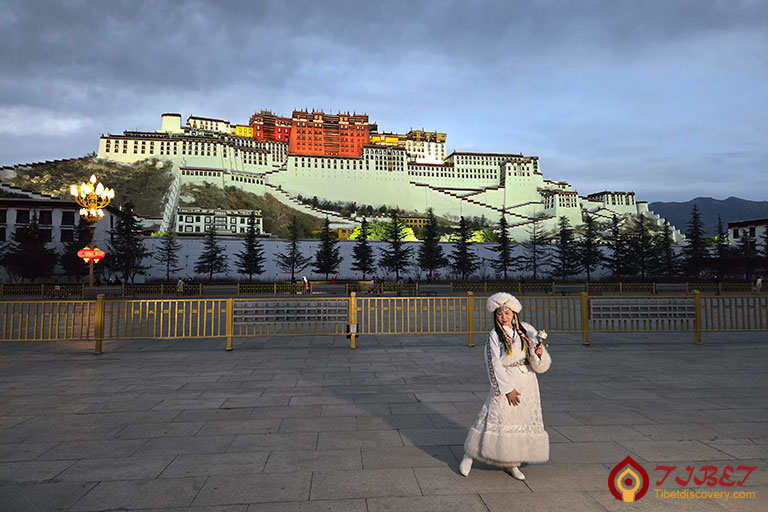
Conrad's family visited Potala Palce in April 2024, tour tailormade by Rita
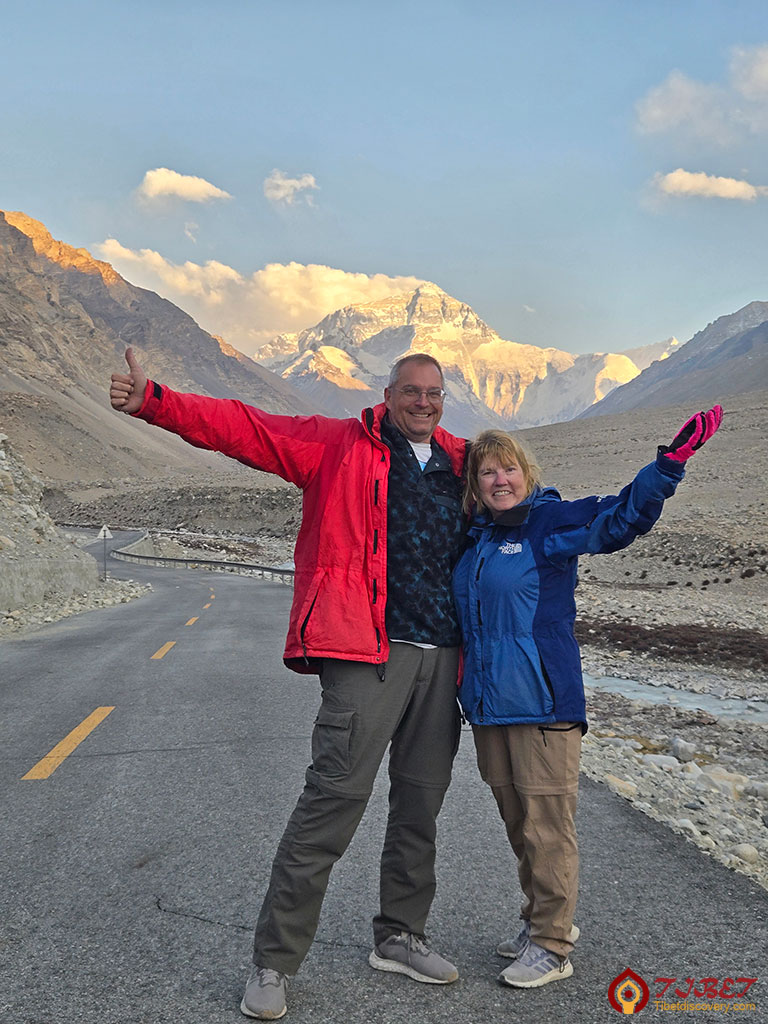
Conrad's family visited Mount Everest in April 2024, tour tailormade by Rita
- April 28, 2024
- Thank you Wonder,
-
A wonderful trip, giving me a great impression of Chengdu and Chongqing, thanks to the professional guide by Ellen and David.
Jesús
- February 18, 2024
- Thank you very much Mr Leo Li,
-
we were pleasantly satisfied with the service provided by you.
Pablo was very empathetic and adjusted to our needs, particularly in the speed at which we could walk. His Spanish very good. The van and driver also ok.
The sites visited were wounderful and the time spent in them was well balance.
EVERYTHING OK, thank you and greetings from Mexico.
Jesús
- December 20, 2023
Recommended Add-on Options

-
Your Tibet Adventure is not complete without conquering the Mount Everest, the highest mountain in the world. Don't miss the chance to challenge yourself!
It needs only 4 days to take a Mount Everest Adventure from Lhasa. You will travel from Lhasa, via Gyantse and Shigatse, to the Everest Base Camp to explore the fascinating clear front face of the dominating Mount Everest. You will also stay a memorable night on the mountain, then drive back to Lhasa. The road to Mount Everest is another highlight with many unique sights to see, such as the holy lake Yamdrok, mysterious Palcho Monastery, Gelug tradition of Tashilhunpo Monastery, etc.

-
Namtso Lake, one of the five most beautiful lakes in China, should not be missed by any traveler who visits Tibet.
Namtso is the best place to explore the nature of Tibet. With the snowy mountains in the background, the crystal-clear dazzling blue water, Namtso is stretching to the horizon. In clear days, the lake looks like a beautiful turquoise surrounded by magnificent snow-capped Tanggula Mountains, and the lake shore is green, wide and open, dotted with tents, yaks and sheep of local nomads. For travelers, Namtso is the ideal place for photography, while for Tibetans, it is a sacred and magical lake for pilgrimage.
Useful Trip Notes
- 1. Tibet Permits Guaranteed
To travel in Tibet, all Non-Chinese passport holders need to have a Tibet Travel Permit which is issued by Tibet Tourism Bureau in Lhasa. And only Chinese travel agencies like Tibet Discovery can apply for the permit on behalf of tourists. You must obtain it before your tour starting because the permit will be checked when you board your flight/train to Tibet. Traveling with Tibet Discovery, you don't have to worry about the complicated procedures of Tibet Travel Permit application. All you have to do is to confirm a tour package with us and send us your passport and Chinese visa copies at least 15~20 days in advance before your tour, then we will take care of all the rest things. Once the permit is issued, we will deliver to your address in China, such as your hotel, local travel agency, etc. - 2. Available Months to Visit Tibet
Generally speaking, April to October is the best time. July and August are the peak season and rainy season. It is usually snowy and cold in winter, which is not suitable for visit Mount Everest, Namtso and Mount Kailash regions. While other places such as Lhasa, Gyantse and Shigatse are suitable for travel all year around. The temperatures in daytime and night differs a lot, usually 5~15℃ in the daytime and -5~0℃ in the night, so please wear accordingly. - 3. High Altitude Sickness
The average altitude of Tibet is about 4000 meters above the sea level (Lhasa: 3700m; EBC: 5200m; Namtso: 4718m). You may suffer a bit from High Altitude Sickness in the beginning days of your Tibet trip if you haven’t had rich high plateau travel experience. But don’t worry too much, the high altitude can be acclimatized usually in 2~3 days. Our suggestion is to take a physical examination and get suggestions from your doctor, and also bring some medicines to prevent from High Altitude Sickness before your trip. While in Tibet, you should keep warm all the time, avoid strenuous activities, drink more water and eat more vegetables and carbohydrates. You’d better not take showers during the first two days after your arrival in Tibet. If you don’t feel well, get help from your tour guide or go to the hospital without any delay. - 4. How to Go to Tibet
Basically you have two options – flight and train. Currently, you can take a flight to Lhasa from Beijing(4.5hrs), Xian(3.7hrs), Chengdu(2.5hrs), Chongqing(3hrs), Kunming(3hrs), Kathmandu (1.5hrs), etc. Among all these cities, Chengdu and Xian have more frequent flights to Lhasa.
If you prefer a train travel, you can take a train to Tibet from Beijing(40.5hrs), Xian(32hrs), Chengdu(43hrs), Shanghai(47hrs), Chongqing(42hrs), Lanzhou(25hrs), Xining(22hrs), Guangzhou(54hrs). - 5. Packing and Wearing Ideas
Firstly you can’t forget your passport and Chinese Visa. A large backpack and a smaller one are recommended (the smaller one can be used for daily activities). Also bring necessary medicine you need. Other stuffs like sunglasses, snow glasses, hats, lip balm, sun block are recommended.
As for wearing, you are suggested to dress in layers (both thin and thick jackets). Down jacket is necessary in Spring and Autumn. A pair of durable and comfortable shoes is necessary.
Other Recommended Tour Packages
Tibet has too much to offer and our aim is to bring you the best experience in Tibet. Following are some other recommended Tibet tour packages that you may be interested in. All of our Tibet tour packages are customizable to meet your personal requirements. You can also contact us to customize a trip if you want.
-

Lhasa / Gyantse / Shigatse / Everest / Lhasa
8 Days Lhasa to Mount Everest Private Tour
Potala Palace, Yamdrok Lake, Tashilhunpo Monastery, Mt. Everest
$1,599 / Details -
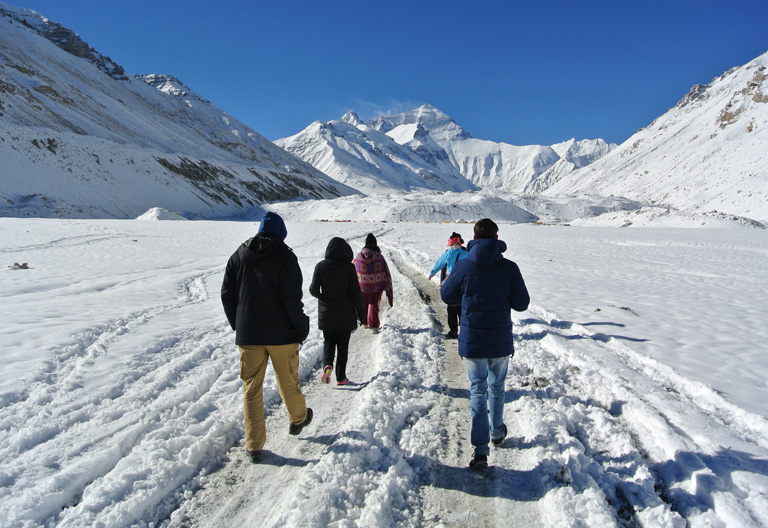
Lhasa / Gyantse / Shigatse / Old Tingri / Everest Base Camp / Lhasa
12 Days Everest Base Camp Trekking Tour
Trekking to Everest Base Camp, Yamdrok Lake, Palcho Monastery, Potala Palace
Request / Details -
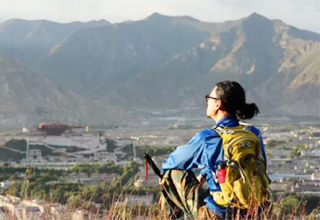
Lhasa city and suburb
No documents found.




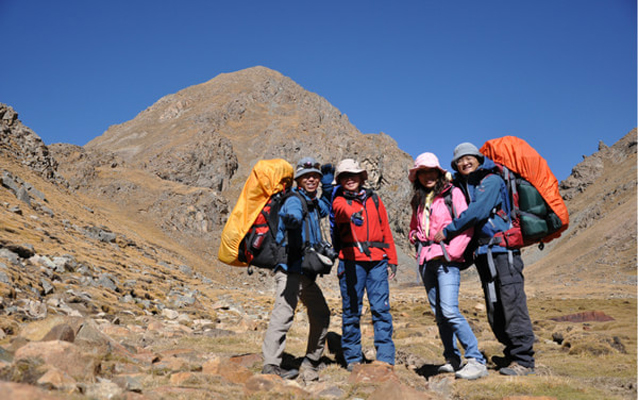
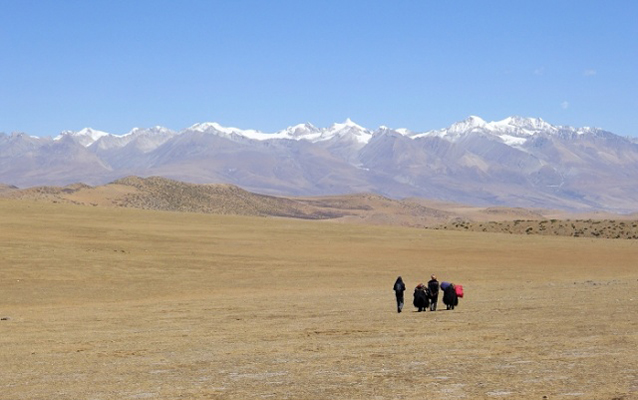
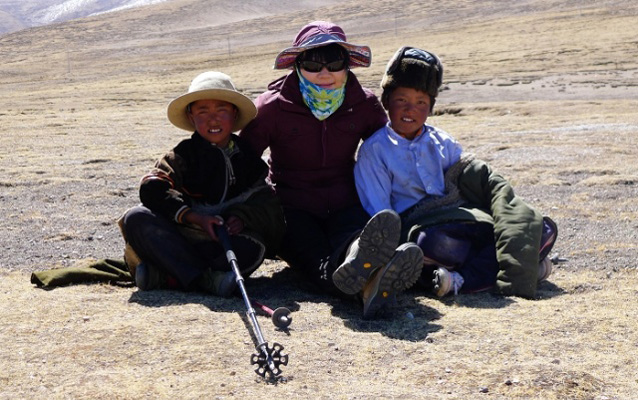
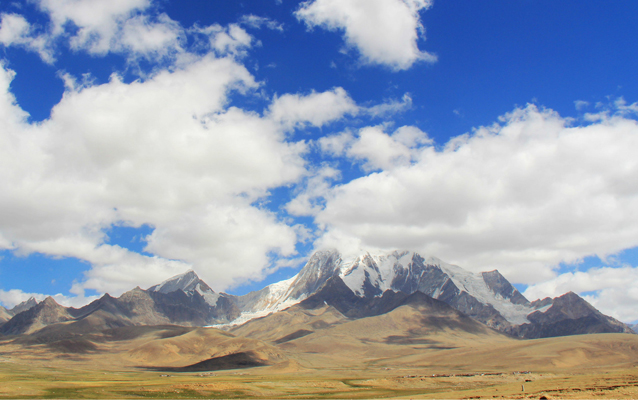

 Karen
Karen Wonder
Wonder Jack
Jack Rita
Rita Johnson
Johnson Vivien
Vivien Wing
Wing Ariel
Ariel Leo
Leo Tracy
Tracy Evelyn
Evelyn April
April Phoebe
Phoebe Kelly
Kelly Felix
Felix Sean
Sean